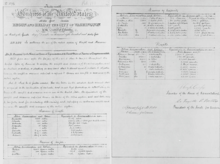Metric Policy


The U.S. Congress has established a national policy of increasing the voluntary use of the metric system as the preferred system of measurement for trade and commerce in the United States. It is this national policy that places the decision and pace of metric use in the hands of individual companies, organizations, and persons. Currently, U.S. law permits the use of either the SI (International System of Units) or the U.S. customary measurement system. Although NIST is a non-regulatory agency, the adoption of SI practices is encouraged whenever possible. Explore Metrication in Law and U.S. Metrication Frequently Asked Questions to learn more.
U.S. Metric System (SI) Legal Resources
Federal Agency Metric Policy Implementation Examples
EXPLORE THE METRIC PROGRAM
Becoming Familiar with SI | Everyday Estimation | Metrication FAQs | Prefixes | Metric Kitchen | SI Education and Training | SI Publications | Understanding Metric | Writing with Metric Units | National Metric Week | NEST-R (STEM Registry) | NIST Education Resources
Contacts
-
Metric Program




